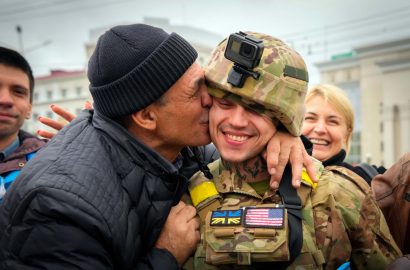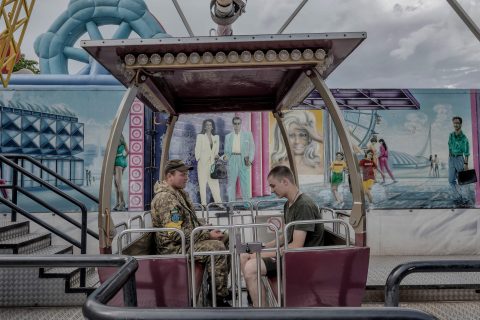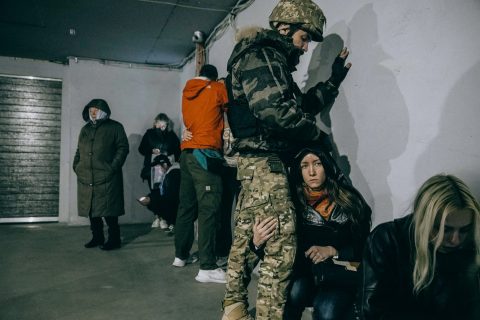
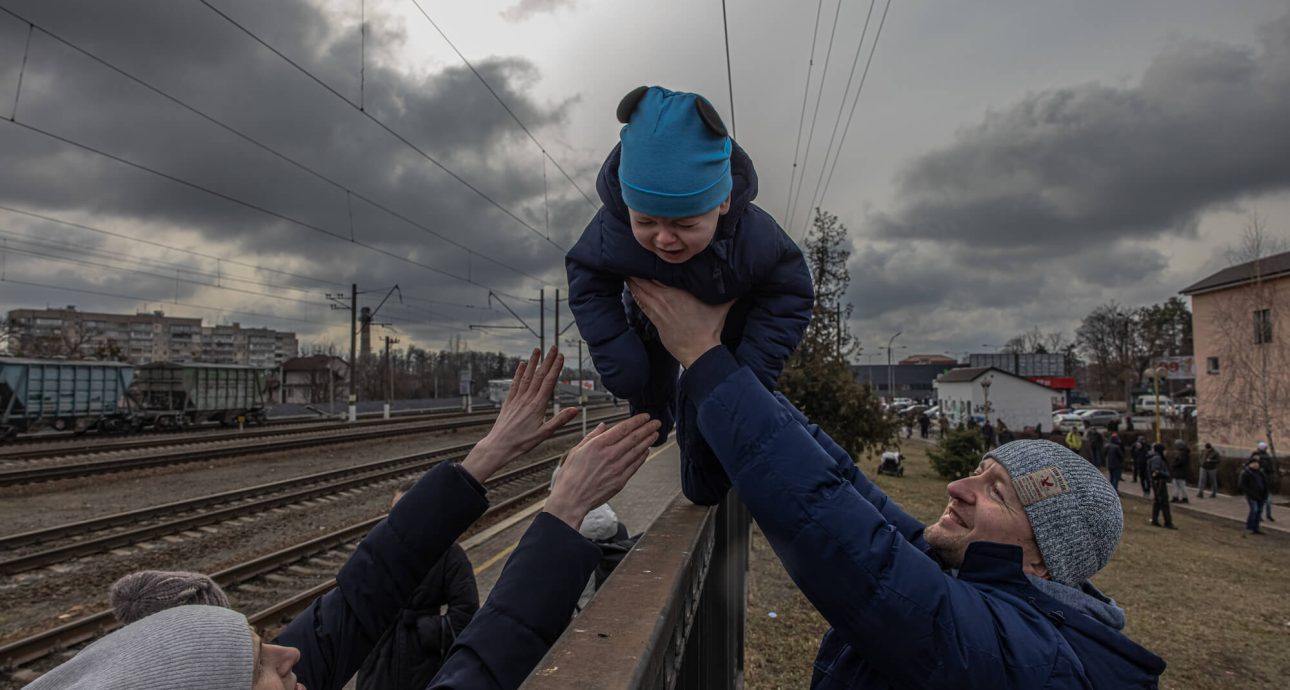
Ten Iconic Photos from the War by Roman Pilipey
Photographer Roman Pilipey documented the Russian-Ukrainian war from its beginning in Donbas. Since 2017, he lived in China, working for the international photo agency EPA. The invasion found Roman there, but he returned to Ukraine and continues to capture the full-scale war and its aftermath. He is now a freelancer, actively collaborating with the international agency AFP and being published in many global media outlets. The photographer selected ten images, mostly depicting the stories of civilians affected by the war, and explained why these particular photographs are significant.
Meeting in Bucha
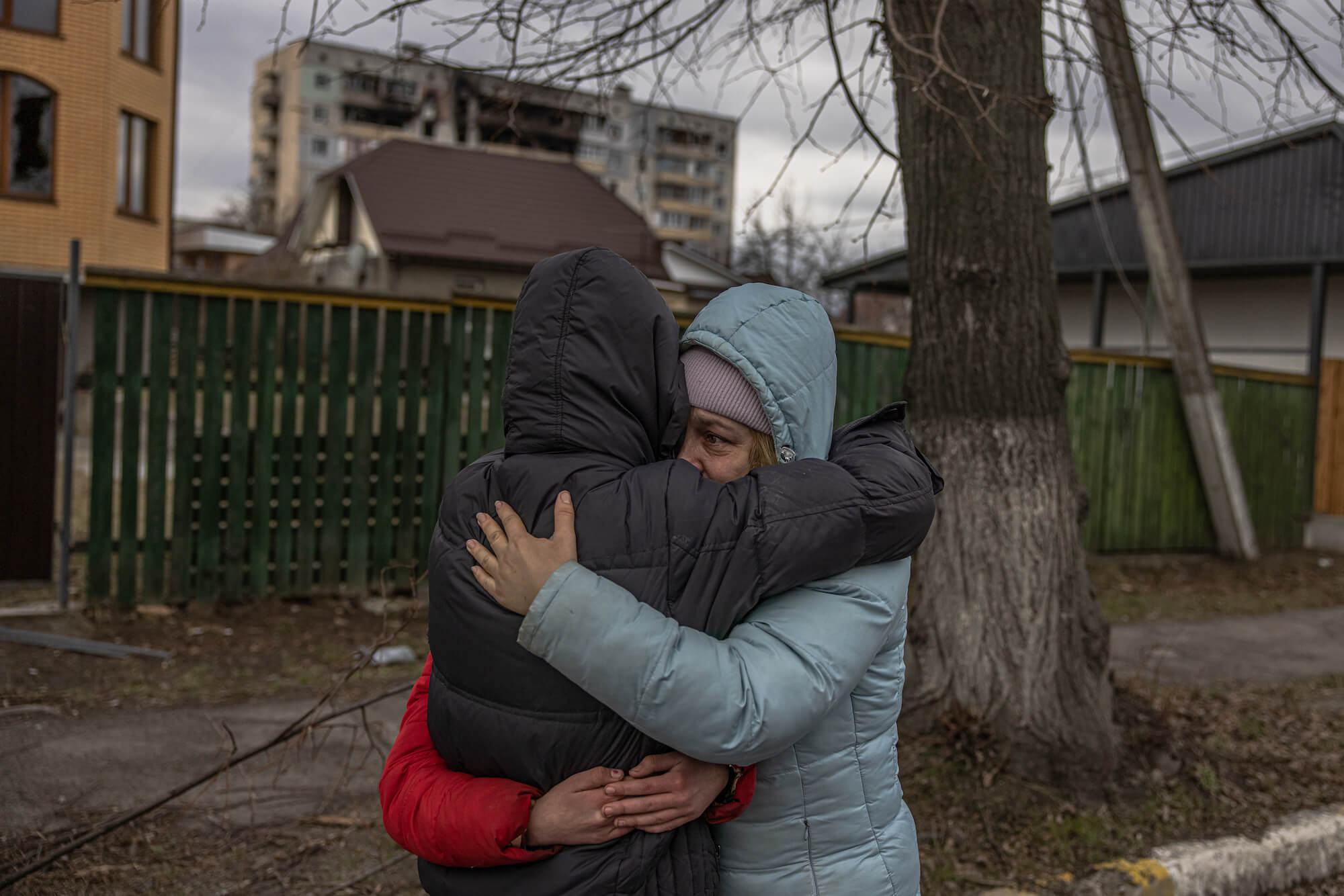
This is Vladyslava Lyubarets and her sister at the moment of their first meeting after the deoccupation. Both of them lived in Bucha, but in different parts of the town, so they hadn’t seen each other or been able to communicate, as they said, for 42 days. Each sister didn’t even know if the other had survived.
I was photographing burned-out vehicles on the street at the time and initially saw a woman walking with a child and a man. Then I noticed this incredibly emotional moment when the sisters reunited. I didn’t want to distract them too much with conversation, but I’m very grateful to Vladyslava for allowing me to experience this moment with her and capture it. It’s such a happy ending for the people in the photo, but unfortunately, we all know that things turned out differently for many in Bucha.
Father and Son
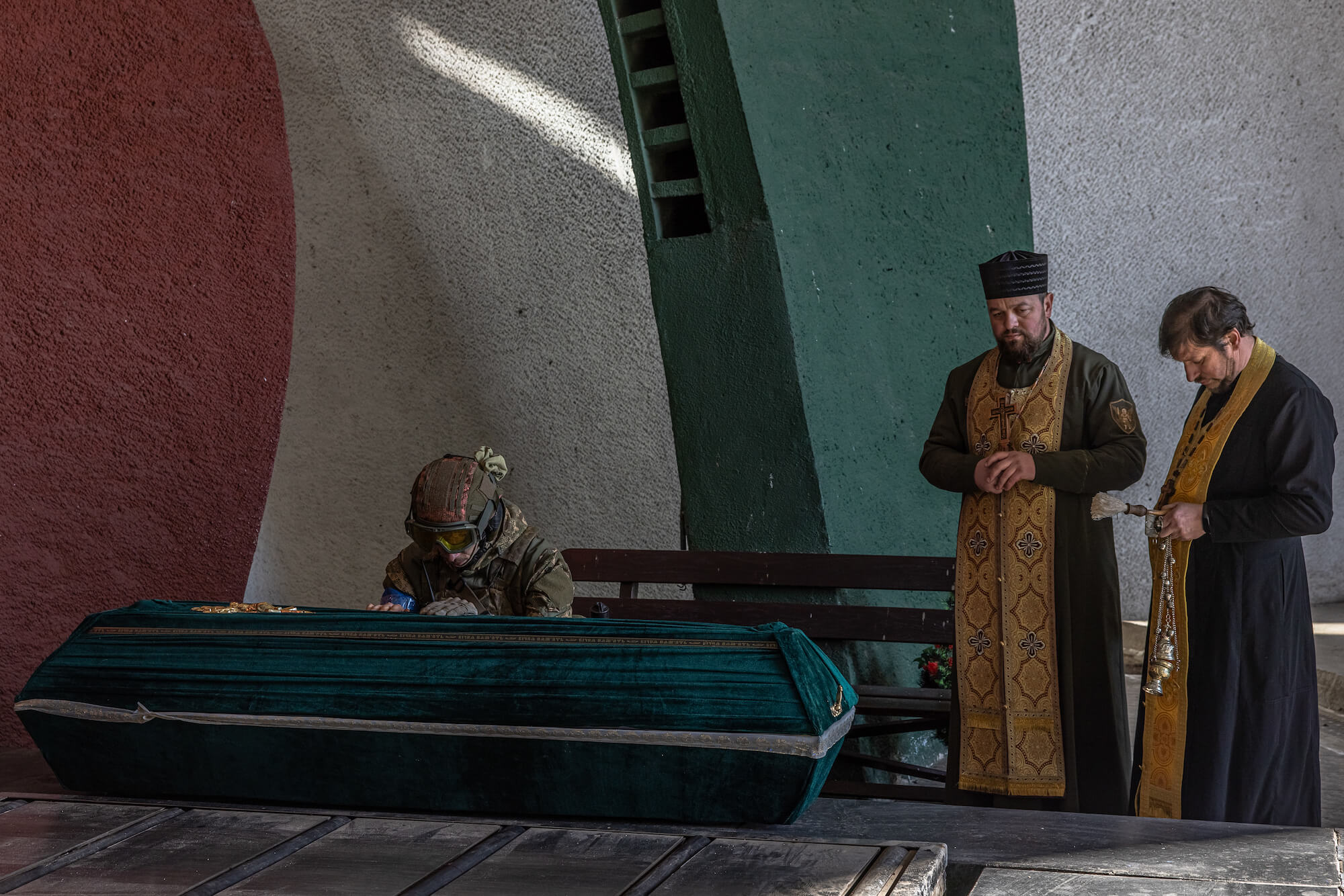
This is the beginning of the invasion, March 15th of last year. Yaroslav is burying his father, who was also a soldier and died in Kyiv region. It’s very sad that during such a difficult time, a proper farewell couldn’t be arranged. Yaroslav was allowed to leave his duty and quickly come, but overall, all the relatives were scattered.
Funerals are a very sensitive topic, and I only photograph them if the family permits. Still, I try to be as unobtrusive as possible, because the most important thing is that the family can say a proper goodbye to their loved one. There are big public funerals, like the one for Da Vinci, where there’s a lot of press. And then there are ones where there’s no one else from the reporters. In that case, Yaroslav allowed me to take photos and even asked for a picture as a memory. But if they say not to do it, I don’t ask why, I don’t try to convince further, I just lower the camera. However, I can stay at the ceremony, pay my respects to the fallen.
And yet, I believe that such images need to be shown to remind the world that the war continues and people are still dying. In 2014-2015, I was actively photographing the war, and after that, I moved to China. Sometimes my colleagues there would ask me if the war was already over for us. And that’s coming from journalists who were more tuned into the news than regular people. So, until the war truly ends, we have to keep reminding about it.
Evacuation from Irpin
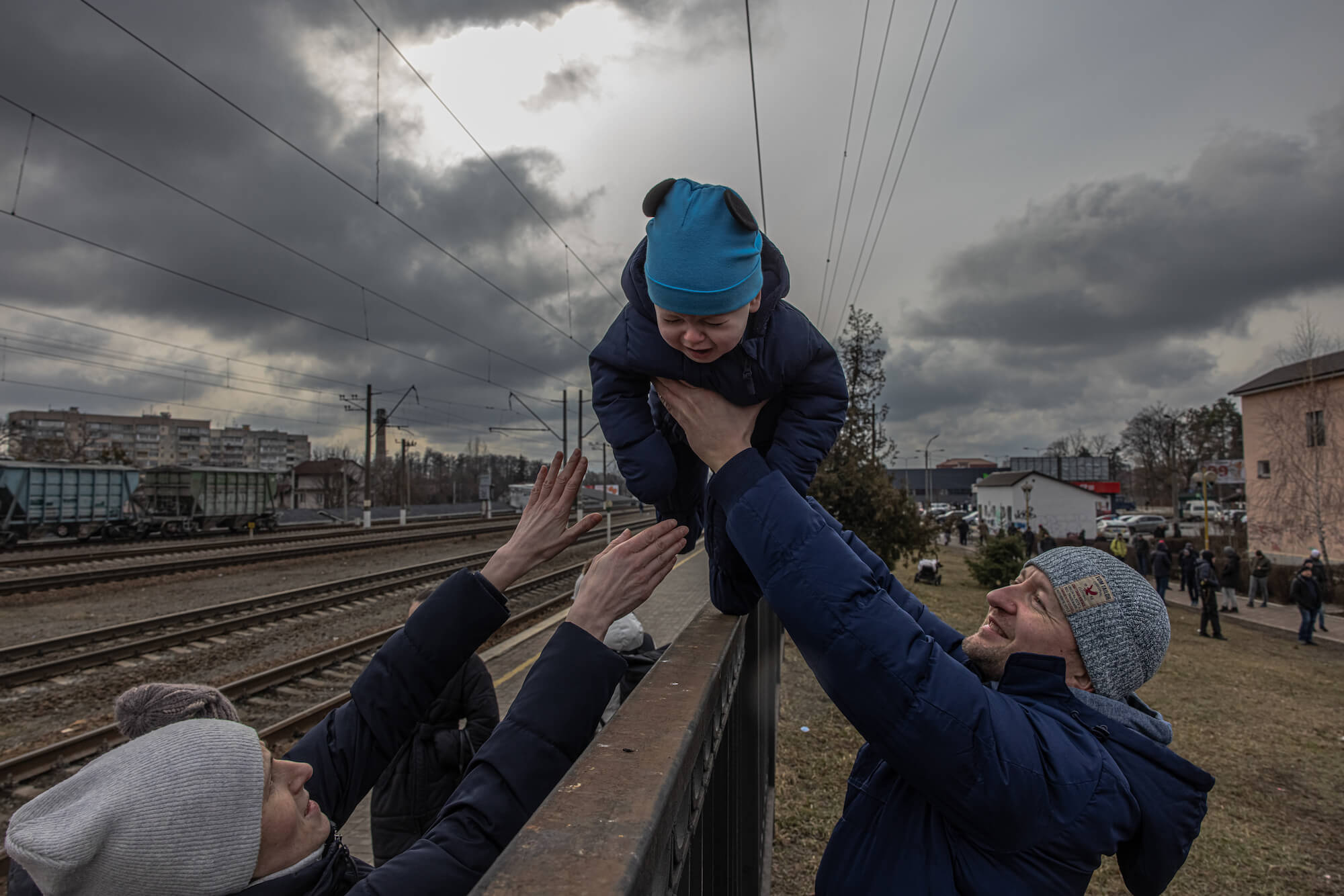
This is Irpin, March 4th of last year. My colleagues and I got stuck there, unable to return to Kyiv. A police officer accommodated us in a school where the locals sought shelter from the shelling. It was unclear whether the Russians had already entered Irpin or not, but the shelling was constant. I decided to go to the train station to capture how people were trying to leave the city.
At that time, evacuation trains only took women, children, and the elderly, while men stayed behind. In the photo, Oleg is handing over his son Maxim to his wife for them to leave. He’s even smiling, trying to hold on and reassure his family that everything will be fine. But, of course, no one knew then what awaited ahead.
Bodies
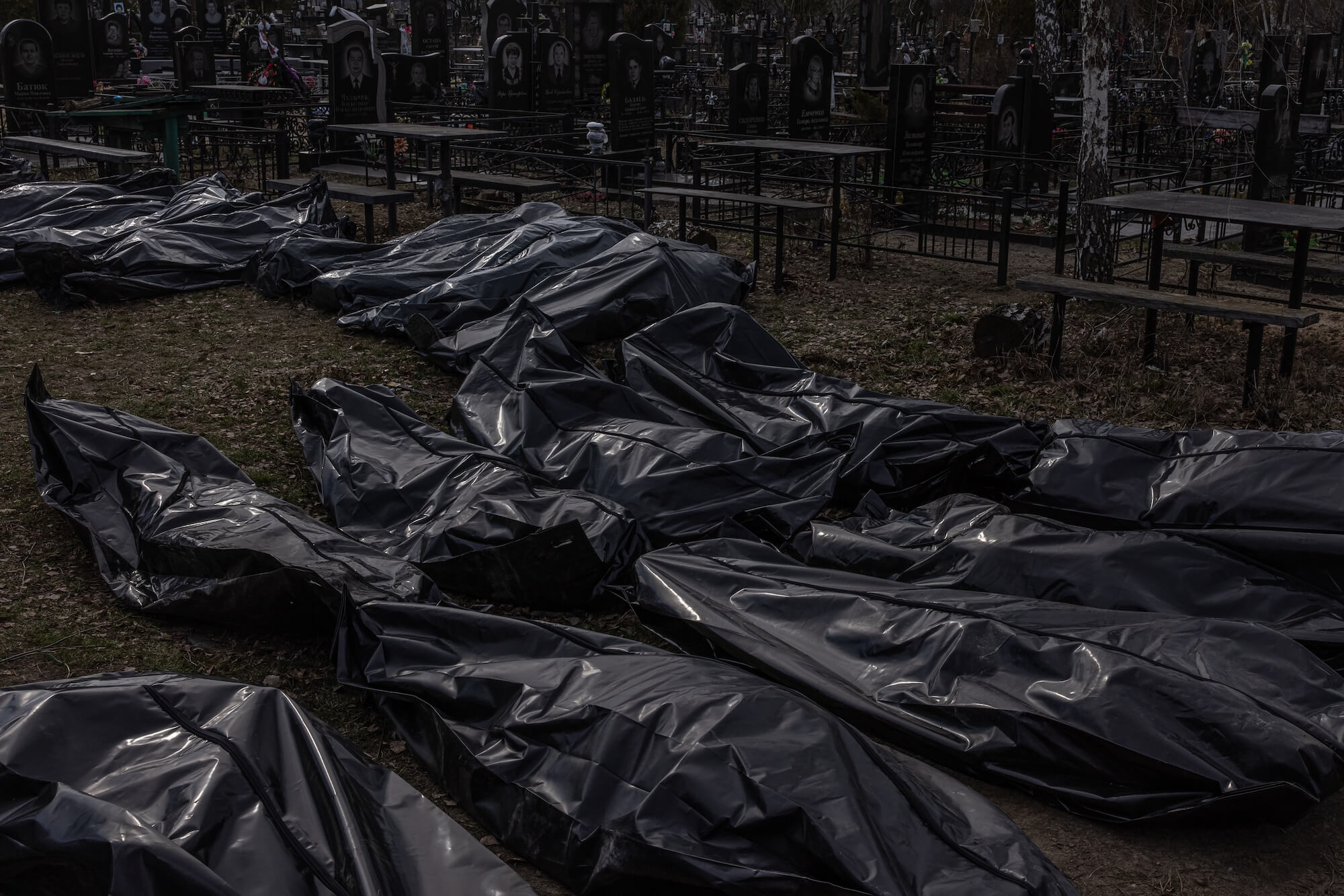
This is Bucha, where after the de-occupation, bodies were found right on the streets. They were collected and brought to the cemetery for identification. Almost all the deceased were civilians.
I remember a woman coming up to me, searching for her son. She showed me a photograph, and it seemed to me that I had seen and photographed his body. It stood out because his documents were still on him. It was a very difficult moment: I found those pictures, showed them to her. The woman seemed to recognize her son, yet continued to say that maybe it wasn’t him. I understood it was a state of shock, denial. I’m not sure how it all ended exactly. I sent her the photo, and by that time, the body had already been taken, so she had to go for identification. But I’m almost certain it was him. It’s hard to go through such experiences, but if we can, we should help in whatever way we can.
Zaporizhzhia
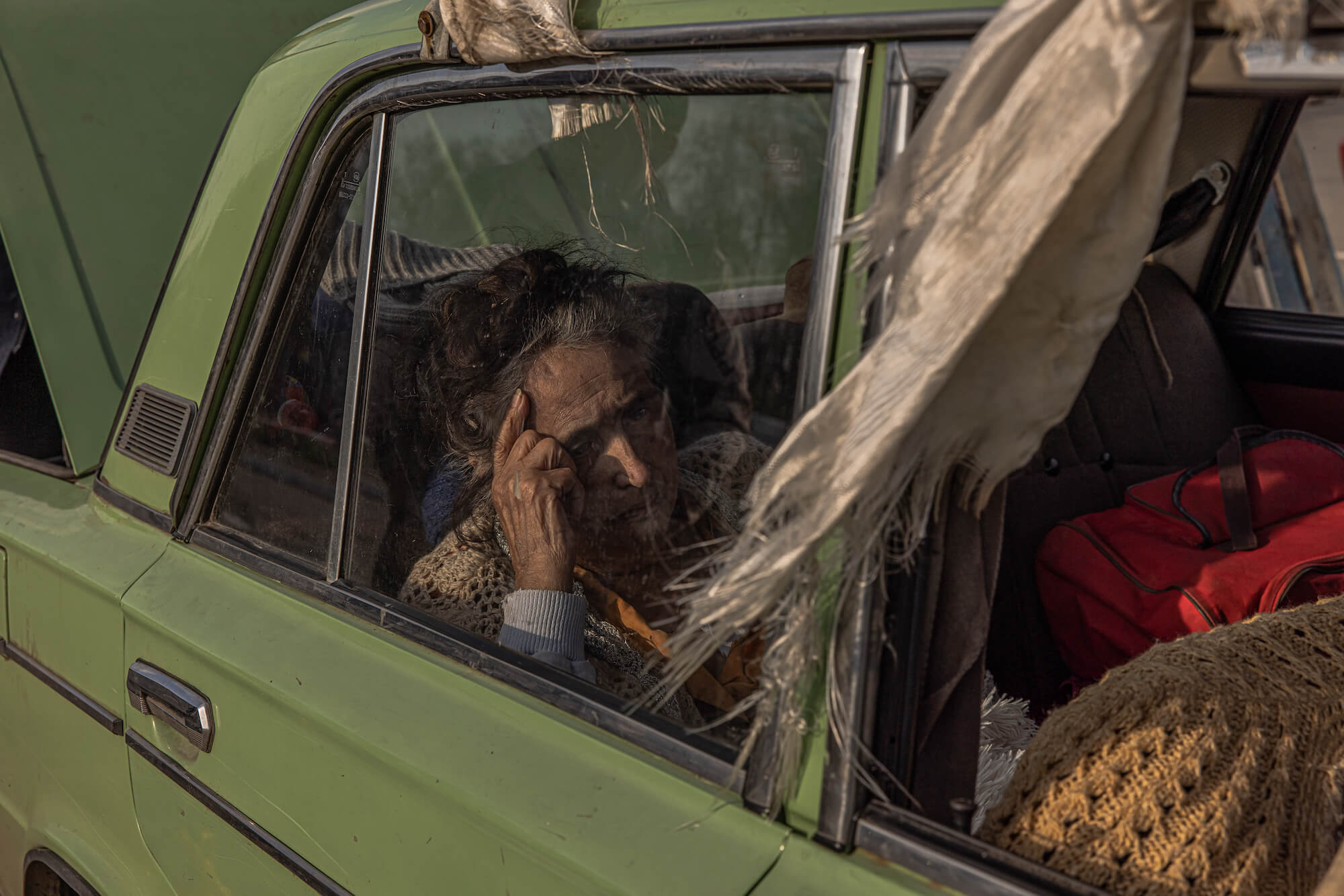
In the photo, it’s an evacuation point in Zaporizhia, where people from the occupied territories were arriving at the time, especially from Mariupol: almost the whole city was already taken, but Azovstal was still holding out. This woman arrived here with her relatives from Mariupol. I noticed how exhausted she looked, and I imagined what she had been through. Usually, for elderly people, their home is the most important thing. Younger ones find it easier to leave everything behind, start a new life in a new place. But for this woman, her future probably seemed entirely uncertain.
I remember photographing in Kyiv at the beginning of the invasion, when there was a fire in a 16-story building. There was an elderly woman standing below it, looking at the burning building and saying that her life was over. I tried to reassure her, repeated that everything would be rebuilt. But she said, ‘No, you don’t understand — my life is over, my apartment is gone.
Kharkiv
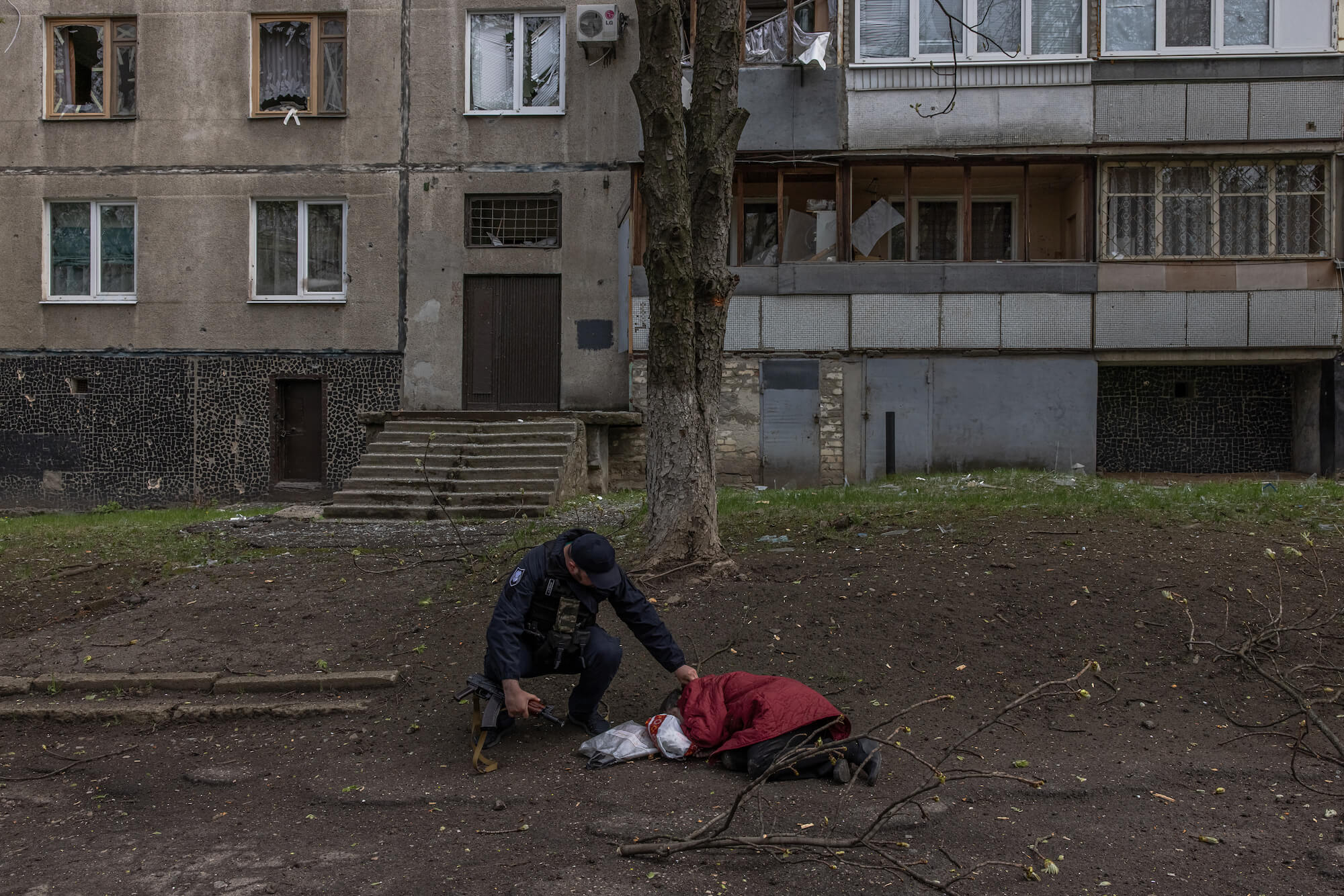
This is the aftermath of just one of the numerous shelling incidents in Kharkiv. A police officer is checking the pulse of the deceased. Looking at the photo, I think about how this woman with some bags was probably coming from a store or somewhere on errands. She was living an ordinary life, and in one moment it was shattered. It’s a reminder that there’s currently no safe place in Ukraine.
Dinner in Kherson
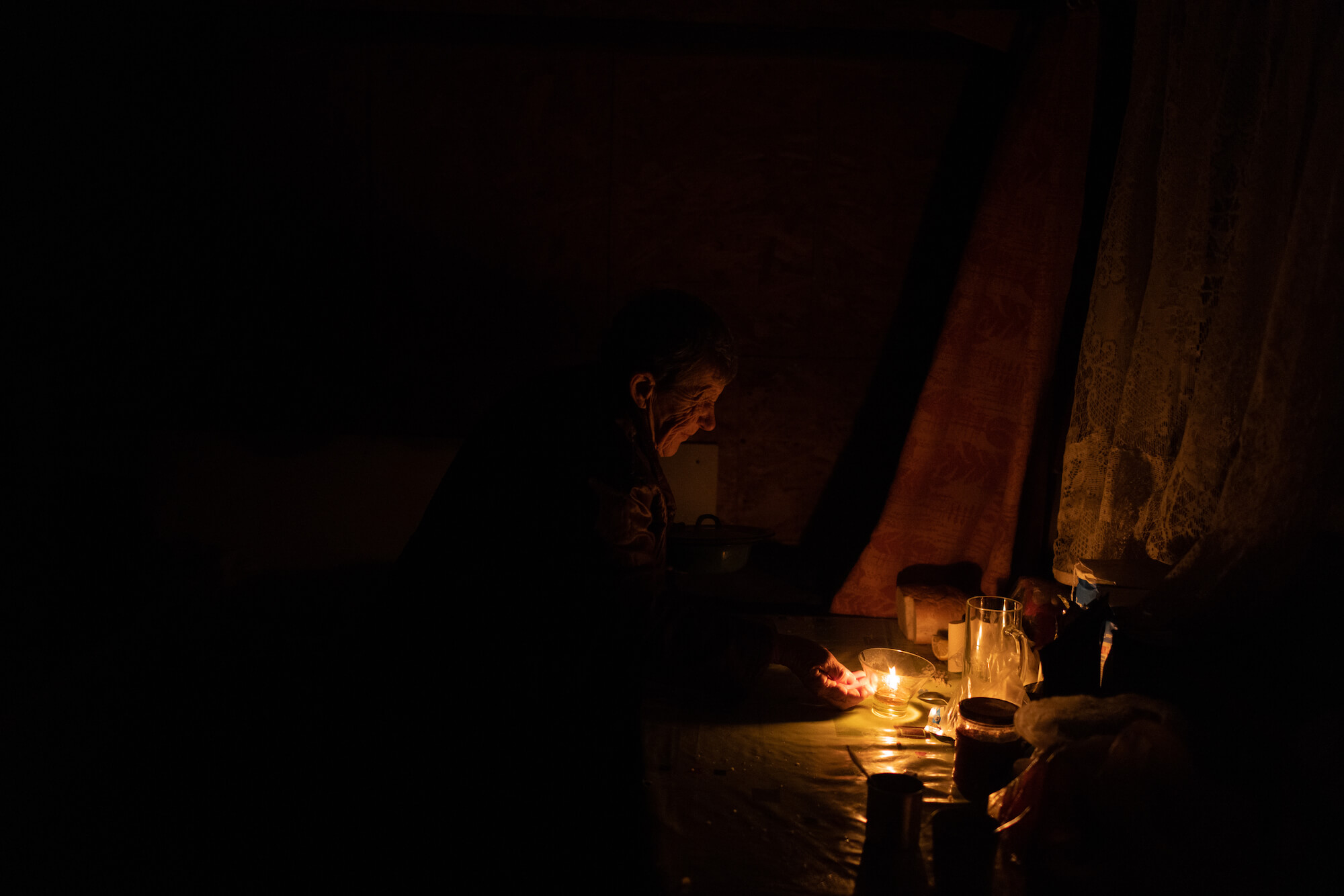
This is Svitlana, she’s 73 years old. She’s preparing dinner in the darkness because right after the deoccupation, there were problems with electricity, water, and heating in Kherson. I met her by chance while driving. I noticed an elderly woman by the road trying to chop a huge branch. I stopped and approached to ask if she needed help. In the end, the driver and I chopped that branch – Svitlana needed it for heating her house and cooking. We started talking, and she invited us to her place to see how she lives.
I noticed that she and her son had very little food and water, yet she wanted to share what she had, to have dinner with us. We talked about the occupation; Svitlana hoped that life would get better now, even the constant shelling didn’t bother her much. When we left, I left her the food and water I had with me. Back then, we couldn’t even imagine that sometime later, the Kakhovka Hydroelectric Power Station would be blown up, and the entire neighborhood where this woman lived would be flooded, forcing her and her son to leave.
Funeral of a сhild
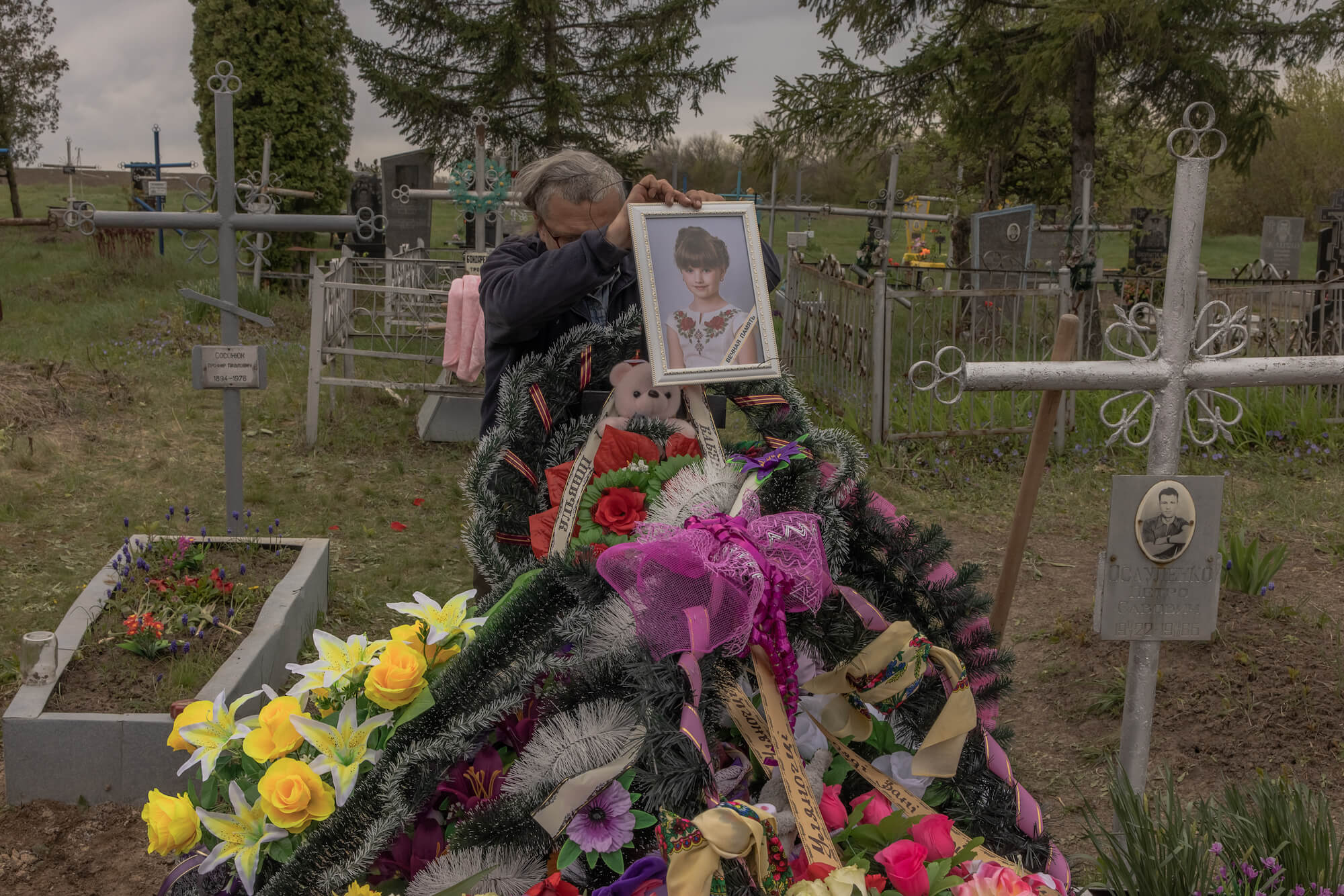
This is the village of Apolyanka near Uman, where a rocket strike on a high-rise building resulted in the death of 23 people. Among them was eight-year-old Ulyana. I took many photos at funerals, but I had never photographed the burial of a child before. It’s, of course, the most difficult. The little girl died alongside her father. Her mother was at the funeral, and school friends also came, bringing many toys. Yes, it’s very hard, but it’s necessary to show who exactly is dying from the Russian strikes.
Therapy
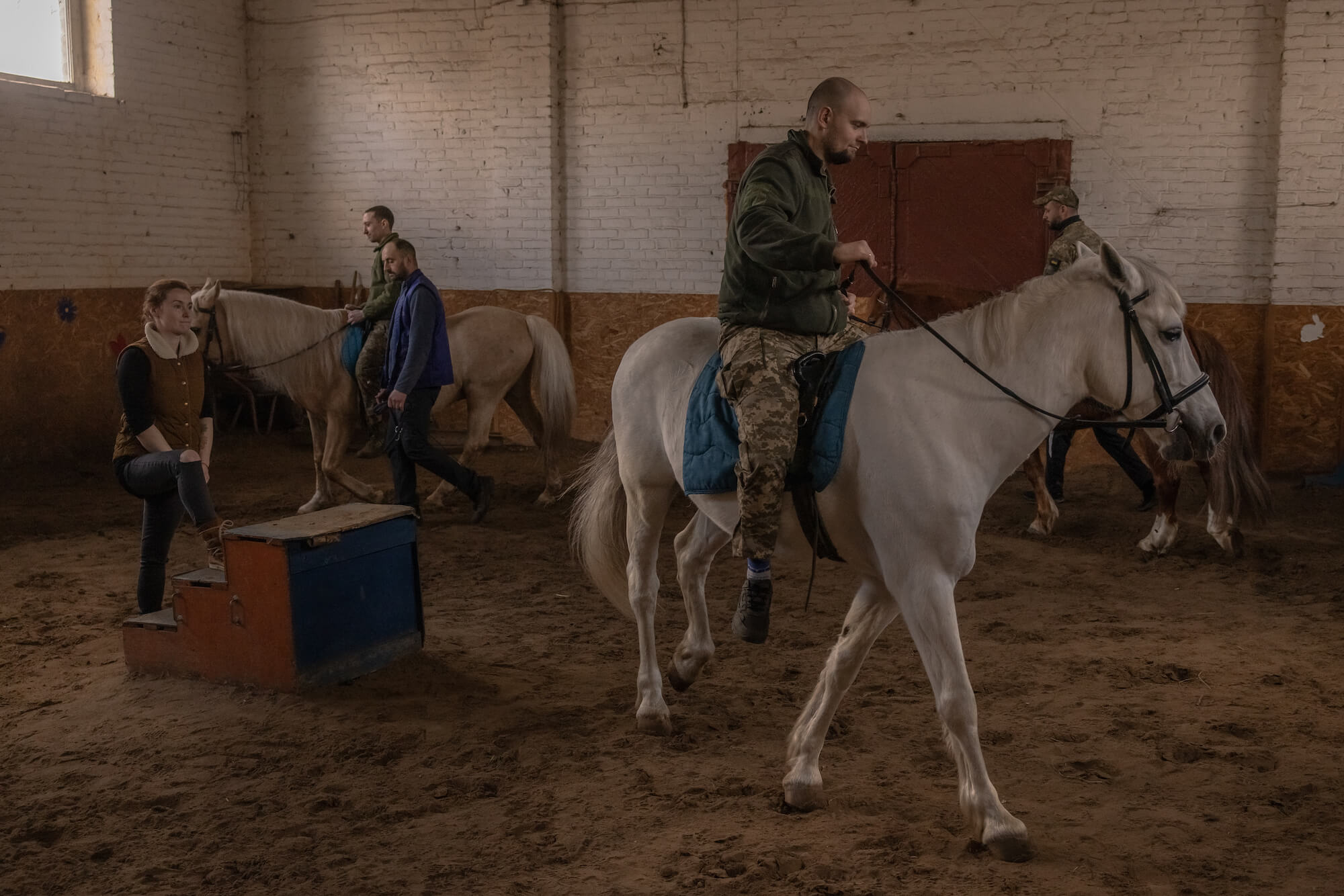
This is the Kyiv Hippodrome, where military personnel undergo equine therapy. The organization that facilitates this used to primarily offer such therapy for children, but after the full-scale invasion, they have been working with soldiers. Communicating with animals helps combat stress and post-traumatic syndrome. In my opinion, it’s crucial to have more diverse programs and initiatives like this, as the need for them is growing among both military personnel and civilians.
During one of these sessions, there was a soldier who sat in a corner and didn’t interact with anyone. Many of his fellow soldiers had been killed, and he was struggling immensely. Others were able to relax a bit through the therapy. So, it’s important to work on such approaches already.
Rehabilitation
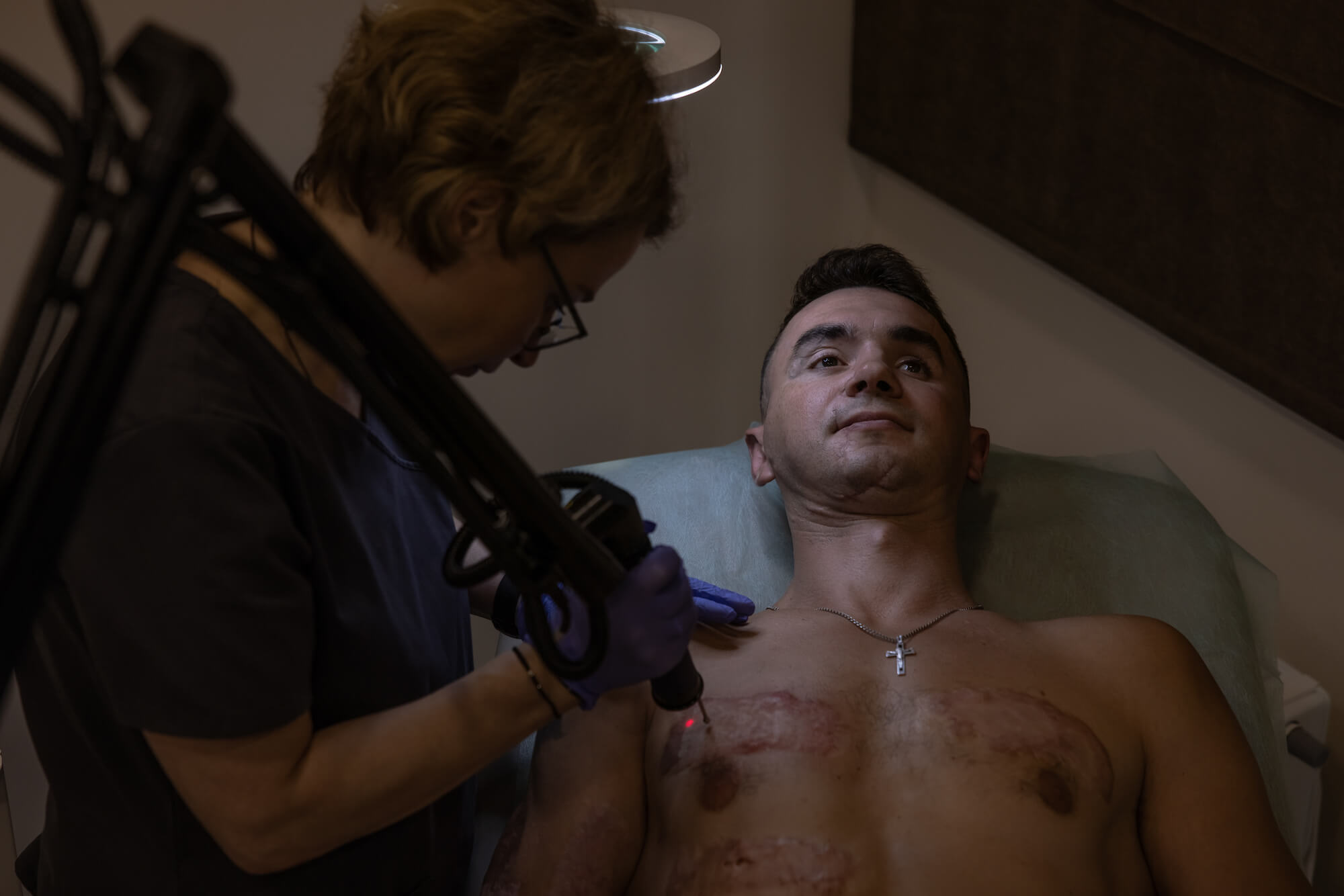
There is a program called “Neopalymi” (“Unburned”), under which those affected by the war receive free treatment for burns and scars. This is very important as it helps people continue their lives. And once again, I believe that there should be more similar programs.
This man from Kyiv, at the beginning of the invasion, moved with his wife and child to a village near Chernobyl. Many thought it would be safer to wait out the situation outside the city. Of course, they soon found themselves under occupation, and when they tried to leave, they encountered an anti-tank mine. His wife died, and he survived with the child, but suffered numerous injuries and burns.
Despite this tragedy, he remained kind and open. I spoke with him and thought about how strong some people are.
This publication was created with the financial support of the European Union. The content of the publication is the sole responsibility of DW Akademie / MediaFit Program for Southern and Eastern Ukraine and does not necessarily reflect the views of the European Union.
Others project materials

New and best

